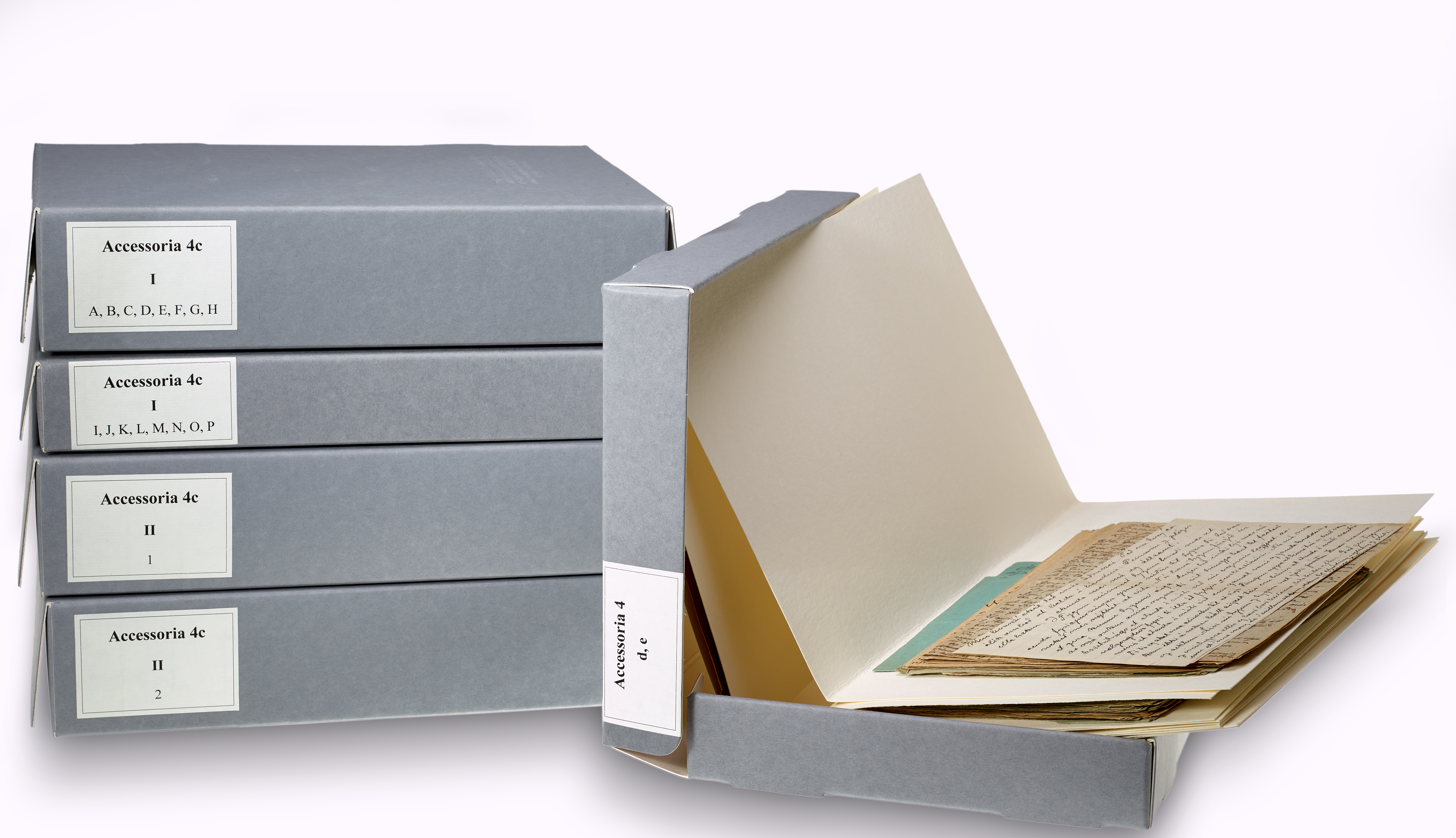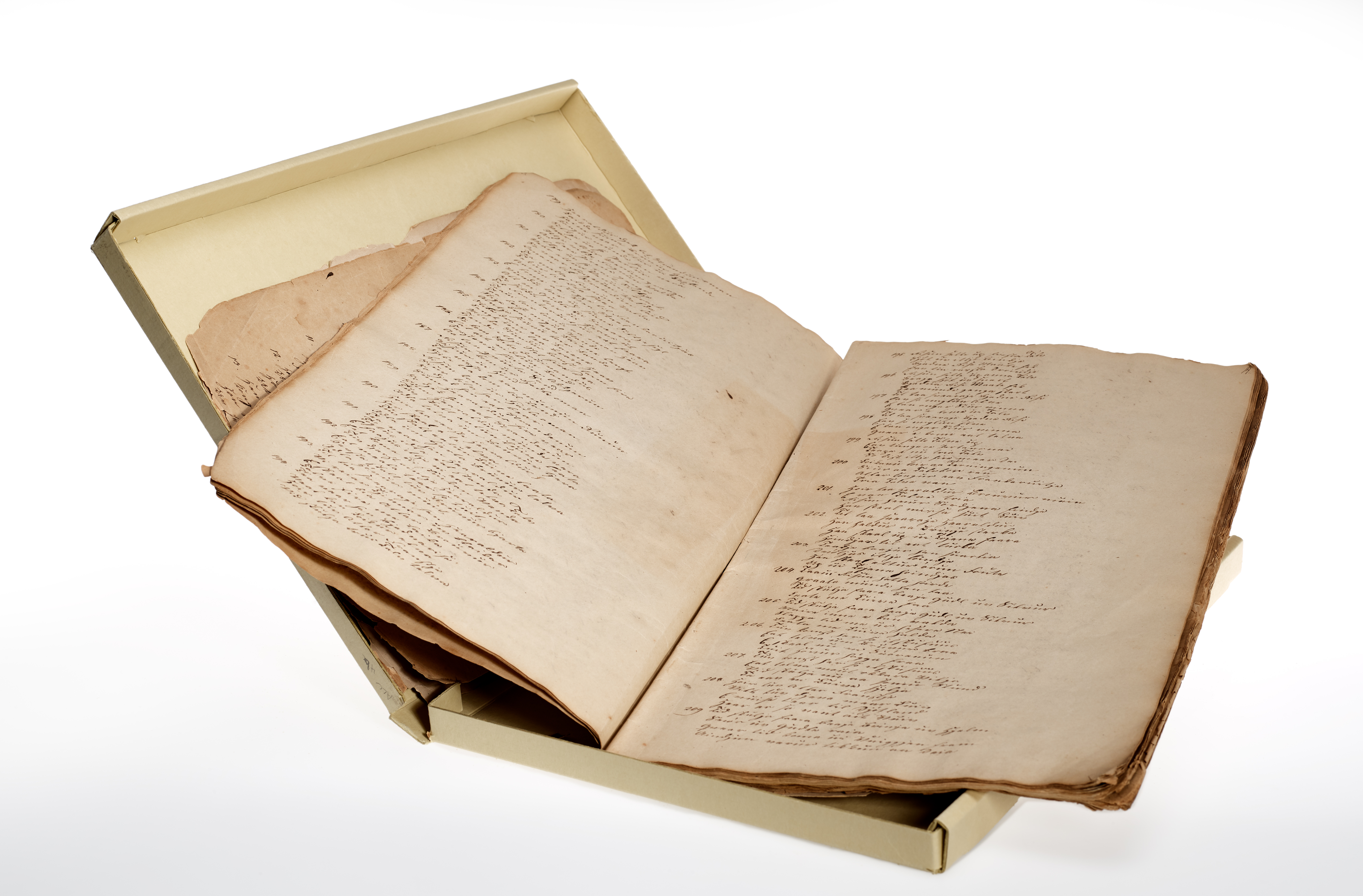How to Count a Manuscript - The Faroese Collection in Accessoria 4
Accessoria 4 is a single shelfmark, but is it a single manuscript? This collection of Faroese papers is surprisingly more than the catalogue number suggests.
How many books do you have at home? This question may be more difficult for some to answer than for others, depending on how big your collection is. Nevertheless, given enough time you will probably be able to come up with a better answer than “well, it depends on how you count a book”.
The same cannot be said about manuscripts. As we have seen in previous installments of Manuscript of the Month, a single manuscript can often be composed of many parts called ‘codicological units’. Oftentimes these pieces are found within a single binding, and we tend to think of all of the pieces together as a single manuscript. But what if the pieces are not bound together? Do they still constitute one manuscript? How do you count a manuscript?
By some definitions, a single manuscript is any handwritten item with an archival number – that is, one shelfmark equals one manuscript. But even this can get complicated, as we can see in the manuscript(s) Accessoria 4.
An Ever-Growing Manuscript
In the original catalogue from 1894, Kristian Kålund writes about Acc. 4 that:
I dette nr vil blive optaget V. U. Hammershaimbs færøske samlinger, opr. bestemte for det kgl. nordiske Oldskriftselskab – med indvigelse af provst H. og Oldskriftselskabets bestyrelse og overensstemmende med den til den AMske sml. 1883 stedfundne aflevering af selskabets håndskriftsamling.
[To be incorporated into this number are V. U. Hammershaimb’s Faroese collections, originally intended for the Royal Nordic Society for Antiquities – initiated by provost H(ammershaimb) and the Society’s board and in accordance with the 1883 delivery of the Society’s manuscript collection the the Arnamagnæan Collection.]
From the very beginning, Acc. 4 was intended to be more than a single manuscript – the shelfmark was essentially a placeholder for new manuscripts entering the collection which previously had been collected by the Faroese priest and philologist V.U. Hammershaimb (1819-1909). These manuscripts were originally intended for the Royal Nordic Society for Antiquities, which in 1883 had gifted its collection of around 50 manuscripts to the Arnamagnæan Collection, mostly younger copies of Icelandic sagas (Finnur Jónsson 1930: 184-185).
Today Acc. 4 is subdivided into five parts, labelled a-e. Three of these subdivisions – Acc. 4 a, 4 b and 4 e – are single pieces. Meanwhile, Acc. 4 c and 4 d are larger collections of Faroese manuscript material.
Acc. 4 c is further subdivided into two parts, I and II, which have to do with how they were originally stored. Because the contents of these collections are so varied, both textually and materially, parts I and II can also be subdivided. Part I contains 14 subdivisions, while part II contains 19. That means that, depending how you count it, the single manuscript shelfmark Acc. 4 c is actually 33 manuscripts!

Faroese ballads alphabetically arranged
Despite how it may appear at first glance, Acc. 4 c is not merely a dumping ground of leftover papers from Hammershaimb’s desk. The largest portion of the collection is Faroese ballads (called kvæði) arranged in alphabetical order, from Álvur kongur in Acc. 4 c I 1 to Vevpíkan in Acc. 4 c II 5. Each of the individual subdivisions is contained in a separate folder for each of the letters A B D E F G H I&J K L M N O P R Sa-Sj Sk-Sv T and V.

These ballads were copied by a number of different people, both laypersons and scholars who travelled around the Faroe Islands collecting ballads from informants and writing down this portion of oral culture. Hammershaimb, who had collected the papers and arranged them into the individual folders, had also written a number of the ballads down, in his distinctive orthography which would lay the groundwork for modern Faroese spelling. In addition to Hammershaimb’s copies are a large number of ‘clean copies’ made by Johannes Clemensen (1794-1869), also known as Jóannes í Króki, who is best known for having written the ballad manuscript Sandoyarbók (Dansk Folkemindesamling 68). In contrast to Hammershaimb’s orthography based on etymological principals, Clemensen’s spelling system follows the pronunciation of Faroese at the time.
Most of the ballads are written in small booklets of loose leaves of paper, sometimes scraps. Many of the ballads, especially those in Hammershaimb’s and Clemensen’s hands, are written on distinctive blue paper.
 |

Two copies of the ballad Frúgvin Espalín by Hammershaimb (right) and Clemensen (left) on distinctive blue paper. The difference in spelling can be clearly seen in the first line, where Hammershaimb writes “Eina veit eg rímuna”, exactly as in modern Faroese spelling, while Clemensen writes “Aina vaid E ruimina”, following the pronunciation. |
Collections inside collections
Following the alphabetically-arranged folders are 14 folders containing various collections. Many of these are collections written by single scribes. For example, Acc. 4 c II 16 contains ballads copied by Jens Davidsen (1803-1878), the protégé of Johan Henrik Schrøter (1771-1851) who copied many other ballads found elsewhere in Acc. 4c or other manuscripts.
The final part of the collection, Acc. 4 c II 19, consists of various loose pages and booklets written or collected by Schrøter. In addition to Faroese ballads, this collection known as “Schrøter’s Miscellania” contains extracts of the 1814 poem Helgeby the Danish poet Adam Oehlenschläger (1779-1850), Faroese cradle songs, and other various items.

How to count a manuscript
Counting manuscripts is not as easy a task as it may seem, since throughout their existence manuscripts changed, either by their users or by later collectors. Beeke Stegmann (2017) for example has written about how Árni Magnússon moved pieces of manuscripts around as he built up the collection we now know as the Arnamagnæan Collection. Many of the manuscripts we now think of as one used to be multiple, and the other way around.
Acc. 4 is perhaps an extreme example of the difficulties in deciding how many manuscripts are found within a single collection. An ongoing project at the Arnamagnæan Collection aims to better register these and the other Faroese manuscripts, their contents and material aspects in the online catalogue Handrit.org.

|
 |
Contact
Seán
Telephone: +45 3533 7566
sean.vrieland@hum.ku.dk
Bibliography
Chesnutt, Michael & Kaj Larsen 1996. Føroya kvæði VII. Copenhagen.
Finnur Jónsson 1930. Árni Magnússons Levned og Skrifter. Copenhagen.
Kålund, Kristian 1888-1894. Katalog over den Arnamagnæanske Håndskriftsamling. Copenhagen.
Stegmann, Beeke 2017. Árni Magnússon's Rearrangement of Paper Manuscripts. Copenhagen.
Contribute to Manuscript of the Month
Have something to say about one or more manuscripts in the Arnamagnæn Collection? Contribute to the column Manuscript of the Month to get your research out there! Write to Seán Vrieland (sean.vrieland@hum.ku.dk) for more details.
